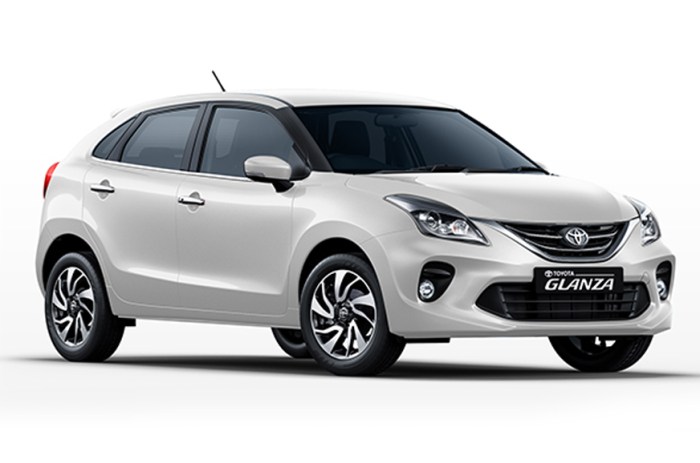All Company New Car Prices A Comprehensive Guide
Understanding All Company New Car Prices
All company new car price – Compiling a comprehensive list of new car prices across all manufacturers presents significant challenges. Factors such as constantly fluctuating market conditions, diverse pricing strategies, and the sheer volume of models available contribute to the complexity of this task. This section will explore these challenges and delve into the key factors influencing new car prices.
Challenges in Compiling a Comprehensive Price List
Gathering complete and up-to-date pricing information is difficult due to several factors. Manufacturers frequently update their pricing, and regional variations in taxes and fees further complicate matters. Access to real-time pricing data requires robust data collection and processing systems, which can be expensive and time-consuming to maintain. Furthermore, dealer markups and incentives, which vary widely, are often not readily available in central databases.
Factors Influencing New Car Prices
Several factors interact to determine a new car’s price. Manufacturing costs, including materials, labor, and research and development, form the base price. Taxes and government regulations add to the cost, differing significantly across regions. Market demand plays a crucial role; high demand can push prices upward, while low demand can lead to discounts and incentives.
Comparison of Pricing Strategies

Source: insuremycars.ie
Different manufacturers employ various pricing strategies. Some focus on value-driven pricing, offering competitive prices with a basic feature set. Others adopt premium pricing, charging higher prices for enhanced features and brand prestige. Some manufacturers utilize price skimming, initially setting high prices before gradually lowering them, while others prefer penetration pricing, launching with low prices to gain market share.
Price Ranges Across Car Segments
| Segment | Manufacturer A | Manufacturer B | Manufacturer C |
|---|---|---|---|
| Compact | $18,000 – $25,000 | $19,500 – $27,000 | $17,000 – $24,000 |
| Sedan | $25,000 – $35,000 | $28,000 – $40,000 | $23,000 – $33,000 |
| SUV | $30,000 – $50,000 | $35,000 – $60,000 | $28,000 – $45,000 |
Data Sources for New Car Prices
Reliable and up-to-date pricing information is crucial for informed car buying decisions. This section identifies key data sources, discusses their limitations, and compares their accuracy.
Reliable Sources for New Car Pricing
Several sources provide new car pricing information. Manufacturer websites offer official pricing, but these may lack details on regional variations or dealer markups. Automotive news websites often compile pricing data from various sources, but accuracy can vary. Dedicated price comparison websites aggregate data from multiple sources, providing a broader perspective but potentially introducing inconsistencies.
Limitations of Manufacturer Websites
Manufacturer websites primarily focus on presenting their vehicles in the best possible light. While providing base prices, they may not always reflect dealer markups, regional pricing differences, or the availability of current incentives. This can lead to discrepancies between advertised prices and the actual price a consumer pays at the dealership.
Comparison of Data Source Accuracy
The accuracy of pricing information varies across sources. Manufacturer websites are generally accurate for base prices but lack complete detail. Automotive news sites often offer a broader perspective but may lag behind real-time price changes. Price comparison websites aggregate data, offering convenience but potentially sacrificing accuracy due to data inconsistencies across their sources.
List of Potential Data Sources
| Source Type | Examples | Reliability | Accessibility |
|---|---|---|---|
| Manufacturer Websites | [Manufacturer A], [Manufacturer B], [Manufacturer C] | High (for base prices) | High |
| Automotive News Sites | [Example News Site A], [Example News Site B] | Medium | High |
| Price Comparison Websites | [Example Comparison Site A], [Example Comparison Site B] | Medium | High |
Factors Affecting Price Variation
The final price of a new car is influenced by numerous factors beyond the base manufacturer’s suggested retail price (MSRP). This section examines these factors, highlighting their impact on the overall cost.
Impact of Optional Features and Packages

Source: maxabout.us
Understanding all company new car prices can be challenging, given the wide range of models and features. To get a sense of the market, looking at past data can be helpful; for instance, you might find valuable information on budget-friendly options by checking out resources like this page on 2018 new car lowest price which provides a snapshot of prices from that year.
This historical data can offer context when comparing current prices across different manufacturers.
Optional features and packages significantly impact the final price. Adding features like premium sound systems, advanced safety technologies, or luxury interior options can increase the cost substantially. The price difference between a base model and a fully loaded model can be significant, often exceeding $10,000 or more, depending on the vehicle and options chosen.
Regional Variations in Taxes and Fees
Taxes and fees vary significantly by region. Sales tax rates, registration fees, and other government-mandated charges can add hundreds or even thousands of dollars to the final price, depending on the location of purchase. Consumers should factor these regional variations into their budget.
Impact of Dealer Markups
Dealerships can add markups to the MSRP, increasing the price beyond the manufacturer’s suggested price. This is especially common with high-demand vehicles or those with desirable features. Consumers should be aware of potential dealer markups and negotiate accordingly.
Hypothetical Price Comparison: Base vs. Fully Loaded Model
Consider a hypothetical compact car with a base MSRP of $20,000. Adding options like a premium sound system ($1,500), advanced driver-assistance systems ($2,000), a sunroof ($1,000), and leather interior ($1,500) could increase the price to $26,000 before taxes and fees. Regional taxes and fees could add another $2,000-$3,000, resulting in a final price of $28,000-$29,000.
Visualizing New Car Price Data
Visual representations of new car price data can provide valuable insights into market trends and pricing patterns. This section demonstrates how bar charts and line graphs can be used to effectively visualize this data.
Bar Chart: Average Prices of Different Car Makes

Source: autocarindia.com
| Car Make | Average Price (Compact Segment) |
|---|---|
| Manufacturer A | $22,000 |
| Manufacturer B | $24,000 |
| Manufacturer C | $20,500 |
This bar chart illustrates the average prices of three different car manufacturers within the compact car segment. Manufacturer B commands the highest average price, while Manufacturer C offers the most affordable option. This visualization highlights price variations between manufacturers within a specific segment.
Line Graph: Price Variations Over Time
| Year | Average Price (Model X) |
|---|---|
| 2020 | $25,000 |
| 2021 | $26,500 |
| 2022 | $28,000 |
| 2023 | $29,500 |
This line graph displays the average price of Model X over four years. The graph shows a steady increase in the average price over time, reflecting potential factors such as inflation, increased demand, or added features.
Consumer Considerations
Making an informed decision when purchasing a new car requires careful research and planning. This section offers guidance on key considerations for consumers.
Importance of Researching Prices, All company new car price
Consumers should research prices from multiple sources before making a purchase. Comparing prices from manufacturer websites, automotive news sites, and price comparison websites provides a comprehensive understanding of market pricing and helps identify potential bargains.
Tips for Negotiating with Dealerships
Negotiating the price with a dealership is a crucial aspect of car buying. Consumers should be prepared to discuss pricing, financing options, and trade-in values. Researching comparable vehicles and having a clear budget helps strengthen the negotiating position.
Financial Aspects of Car Ownership
Car ownership involves significant financial commitments beyond the purchase price. Consumers should consider loan interest rates, insurance costs, maintenance expenses, and fuel costs when budgeting for a new vehicle.
Questions to Ask Before Finalizing a Purchase
- What is the out-the-door price, including all taxes and fees?
- What are the financing options and interest rates?
- What is the warranty coverage?
- What is the trade-in value of my current vehicle?
- What are the maintenance and repair costs likely to be?
FAQs: All Company New Car Price
How often do new car prices change?
New car prices can fluctuate frequently, influenced by factors like market demand, economic conditions, and manufacturer adjustments. Checking prices regularly is advisable.
What is the best time of year to buy a new car?
Generally, the end of the month and the end of the quarter (March, June, September, December) often see better deals as dealerships aim to meet sales quotas.
Are there any hidden fees I should be aware of?
Yes, be aware of potential hidden fees like dealer preparation fees, documentation fees, and destination charges. Always clarify all fees upfront.
Can I negotiate the price of a new car?
Yes, negotiating is often possible. Research the market value of the car beforehand and be prepared to walk away if you’re not satisfied with the offer.





















